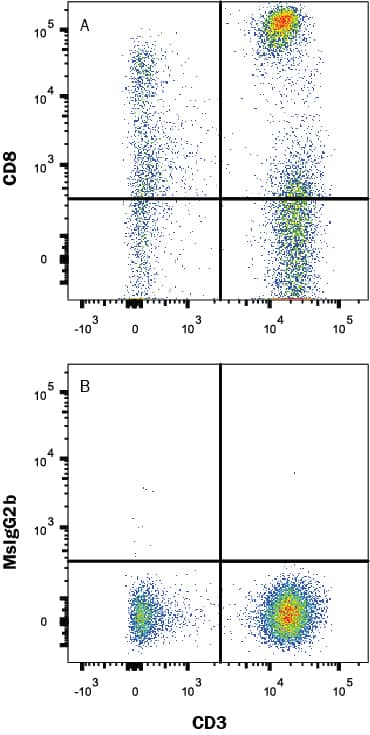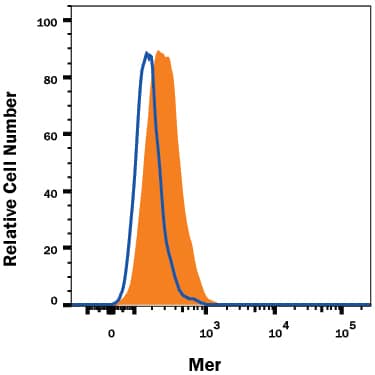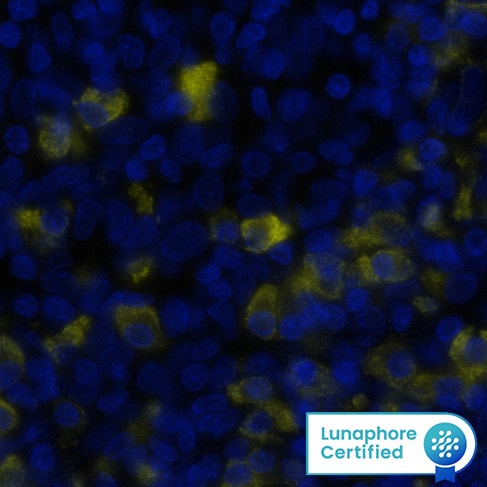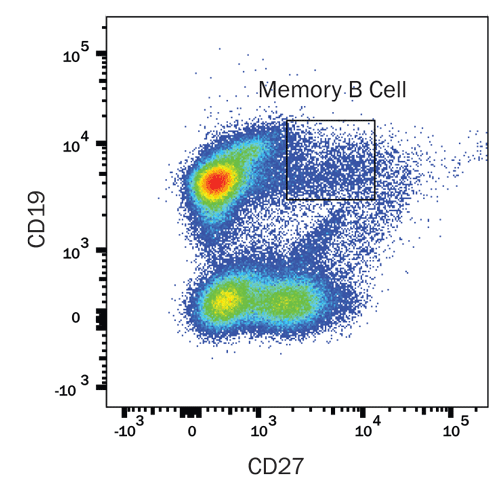Memory B Cell Markers
Click on one of the B cell subsets shown in the buttons below to see the human and mouse markers that are commonly used to identify each cell type.

Recommended Products
Overview
Memory B cells and plasma cells are two populations of B cells that contribute to immunological memory. Following antigen exposure, a population of naïve B cells differentiates into short-lived plasma cells, and a second population migrates to the B cell follicle. Here, activated naïve B cells seed a germinal center, where they differentiate into memory B cells that can rapidly differentiate into plasma cells after antigen re-exposure. Both human and mouse memory B cells are heterogeneous cell populations. In mice, CD19, CD80, CD73, and PD-L2/CD273 are commonly used to identify memory B cells. Differential expression of these markers suggests that there are at least five distinct mouse memory B cell subsets. In humans, memory B cells are commonly identified by expression of CD27, coupled with low level expression of CD23/Fc epsilon RI, and lack of expression of the plasma cell marker, Syndecan-1/CD138. DEP-1/CD148 is also frequently used to identify human memory B cells, as are high level expression of B7-1/CD80, B7-2/CD86, and CD95. Notably, some populations of CD27- memory B cells in human spleen, tonsil, and blood have also been described, and thus, no marker has been identified that can be used to positively identify all memory B cells. Human memory B cells have historically been defined as IgD- cells, but in the blood and bone marrow, three subsets of circulating memory B cells have been described that are either IgD+IgM+, IgD+IgM-, or IgD-IgM+, also known as IgM-only memory cells.
Featured Product

Fluorokines™ for Cell Marker Research
- Direct Detection
- Reduced processing Time
- High Levels of Bioactivity
Data Examples
Detection of Memory B Cells in Human Peripheral Blood Mononuclear Cells by Flow Cytometry. Memory B cells were detected in human peripheral blood mononuclear cells by staining with a Fluorescein-conjugated Mouse Anti-Human CD27/TNFRSF7 Monoclonal Antibody (R&D Systems, Catalog # FAB382F) and an Alexa Fluor® 594-conjugated Mouse Anti-Human CD19 Monoclonal Antibody (R&D Systems, Catalog # FAB4867T).
Detection of Memory B Cells in Mouse Splenocytes. Memory B cells (CD27+/CD19+) from immunized mouse Balb/c splenocytes were detected by staining with an Alexa Fluor® 488-conjugated Rat Anti-Mouse CD27/TNFRSF7 Monoclonal Antibody (Novus Biologicals, Catalog # NBP2-11950AF488) and a PE-conjugated Rat Anti-Mouse CD19 Monoclonal Antibody (Novus Biologicals, Catalog # NBP2-24966).














































